In the ever-evolving world of kitchen appliances, the demand for versatile and adaptable devices has surged. One such innovation that has captured the attention of consumers and manufacturers alike is the dual voltage panini press. This article delves into the intricacies of the dual voltage market, exploring its growth, consumer preferences, and the opportunities it presents for Original Equipment Manufacturers (OEMs). We’ll also examine the global reach of these presses, the regulatory considerations that come with them, the pivotal role of innovation, and a look at some successful case studies in the industry. As we gaze into the future, we’ll make predictions about where the dual voltage panini press market is headed, offering insights into the trends and challenges that lie ahead.
Introduction to Dual Voltage Panini Press Market
In the ever-evolving culinary landscape, the demand for versatile kitchen appliances has surged, and among them, the panini press stands out as a favorite for its ability to create delicious pressed sandwiches. Among the various models available, those designed for dual voltage—120V/240V—have gained significant traction in the global market. This article delves into the intricacies of the 120V/240V dual voltage panini press market, exploring its growth, consumer appeal, and the opportunities it presents for Original Equipment Manufacturers (OEMs).
The dual voltage panini press market has seen a remarkable rise, driven by the need for appliances that can seamlessly adapt to different electrical systems worldwide. These presses cater to a diverse range of consumers, from those in regions where 120V power is standard to those in countries where 240V is the norm. This adaptability makes dual voltage panini presses a sought-after product in the international marketplace.
Understanding the 120V/240V systems is crucial for anyone looking to delve into this market. The 120V system is commonly found in North America, while the 240V system is prevalent in Europe, Australia, and other parts of the world. Dual voltage appliances bridge this gap, offering users the convenience of using the same device across different countries without the need for transformers or voltage converters.
For OEMs, the dual voltage panini press market presents a unique opportunity. It allows manufacturers to produce a single product that can be sold globally, reducing the complexity and cost associated with creating multiple versions of the same item for different regions. This streamlined approach not only enhances efficiency but also opens up new markets and customer segments.
The trend towards dual voltage appliances is not just a passing fad; it’s a reflection of the globalized world we live in. Consumers are increasingly mobile, and they seek appliances that can accompany them on their travels or that can be used in their new homes abroad. The dual voltage panini press fulfills this need, making it an attractive option for those who want to enjoy their favorite foods regardless of where they are in the world.
In terms of market trends, there is a growing preference for kitchen appliances that offer convenience and functionality. Dual voltage panini presses align perfectly with these trends, as they provide users with the ability to create high-quality sandwiches with ease. Additionally, the emphasis on health and wellness has led to a surge in demand for home cooking appliances, further driving the popularity of the panini press.
The global reach of dual voltage panini presses is undeniable. They are particularly popular in regions where the culinary culture includes a variety of sandwich variations. For instance, in Europe, the panini press is a staple for making Italian-style sandwiches, while in North America, it’s often used for creating American-style melts and sliders.
Regulatory considerations play a vital role in the dual voltage panini press market. Compliance with international electrical standards is non-negotiable for OEMs looking to enter this market. Ensuring that these appliances meet the necessary safety and performance criteria is essential for building trust with consumers and avoiding potential legal issues.
The role of innovation in the dual voltage panini press market cannot be overstated. As technology advances, so do the features and capabilities of these appliances. From adjustable heat settings to non-stick surfaces and built-in timers, the latest dual voltage panini presses are packed with features that enhance the cooking experience.
Several case studies highlight the success of OEMs in the dual voltage panini press market. These companies have managed to capture a significant share of the global market by focusing on quality, innovation, and customer satisfaction. Their strategies include investing in research and development, maintaining strict quality control, and establishing strong distribution networks.
Looking ahead, the future of the dual voltage panini press market appears promising. With the continued growth of the global economy and the increasing mobility of consumers, there is a strong potential for further expansion. However, OEMs will need to stay ahead of the curve by continuously innovating and adapting to the changing needs of consumers and the regulatory landscape.
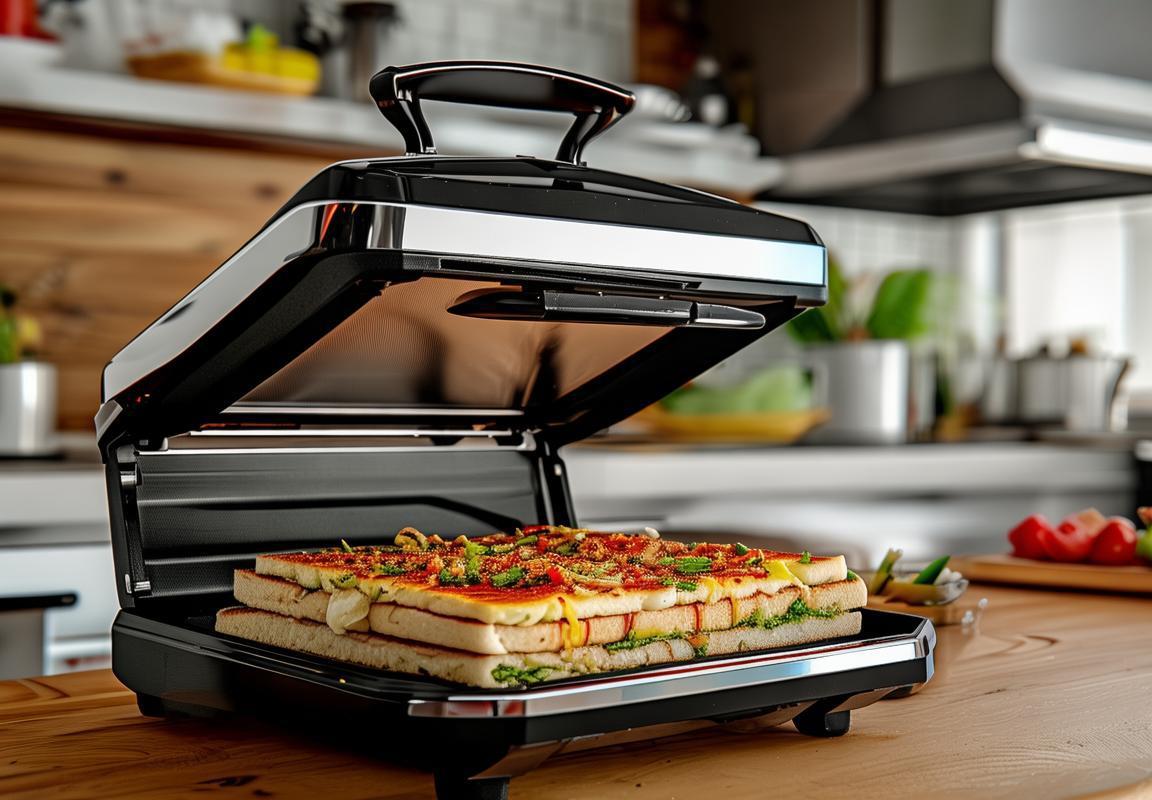
The Rise of 120V/240V Dual Voltage Panini Presses
The landscape of the kitchen appliance market has been undergoing a significant transformation, with a particular focus on the rise of 120V/240V dual voltage panini presses. This evolution is driven by a myriad of factors, including globalization, changing consumer preferences, and technological advancements. As we delve into this trend, it becomes clear that the dual voltage panini press is not just a niche product but a cornerstone of the modern kitchen appliance industry.
The surge in demand for dual voltage appliances is a direct reflection of the increasingly mobile and international lifestyle of consumers. With people traveling more frequently for work or leisure, the need for appliances that can operate seamlessly across different countries has become paramount. The panini press, a staple of the coffee shop culture, has now found its way into homes worldwide, and dual voltage models have become a favorite among those who crave consistency in their food preparation no matter where they are.
One of the key drivers behind the popularity of 120V/240V dual voltage panini presses is the convenience they offer. These appliances are designed to work efficiently on both standard household voltages, which can vary widely from country to country. For instance, in the United States and Canada, the standard voltage is 120V, whereas in Europe and many other parts of the world, it’s 240V. Dual voltage panini presses eliminate the need for cumbersome voltage converters or transformers, making them a straightforward choice for international travelers and expatriates.
Moreover, the dual voltage feature caters to the growing number of consumers who are embracing the art of home cooking. As culinary enthusiasts seek to recreate the flavors of their favorite restaurants or explore different international cuisines, having a reliable panini press that can handle different power requirements is a game-changer. It allows for the perfect press of a sandwich, regardless of whether the user is in a country with lower or higher voltage standards.
The advent of advanced technology has also played a pivotal role in the rise of dual voltage panini presses. Modern designs are not only more energy-efficient but also incorporate features that enhance the user experience. For example, many dual voltage models come with adjustable temperature controls, allowing users to tailor the cooking process to their preferred level of crispiness. Additionally, these presses often feature non-stick surfaces, easy-to-clean designs, and even digital displays, making them a favorite among consumers who value both form and function.
From a business perspective, the dual voltage panini press market has opened up new avenues for Original Equipment Manufacturers (OEMs). As the demand for these appliances continues to grow, OEMs are presented with opportunities to expand their product lines and cater to a more diverse global customer base. This expansion includes not only the development of new models but also the customization of existing designs to meet specific regional preferences and safety standards.
In terms of market dynamics, the dual voltage panini press market is experiencing a surge in competition, with both established appliance brands and emerging companies vying for a share of this lucrative segment. This competition has led to innovation and has pushed the boundaries of what consumers can expect from a panini press. From compact, travel-sized models to high-end, gourmet-quality presses, the variety available is vast and continues to grow.
Furthermore, the rise of e-commerce has made it easier for consumers to purchase dual voltage panini presses from anywhere in the world. Online marketplaces have become a hub for international shopping, allowing consumers to access a wide array of dual voltage appliances with just a few clicks. This accessibility has not only widened the customer base but has also encouraged manufacturers to offer more competitive pricing and value-added services.
In conclusion, the rise of 120V/240V dual voltage panini presses is a testament to the evolving needs of today’s consumers and the global nature of our interconnected world. As the demand for these versatile appliances continues to climb, it’s clear that the dual voltage panini press market is poised for sustained growth, offering exciting opportunities for OEMs and consumers alike.
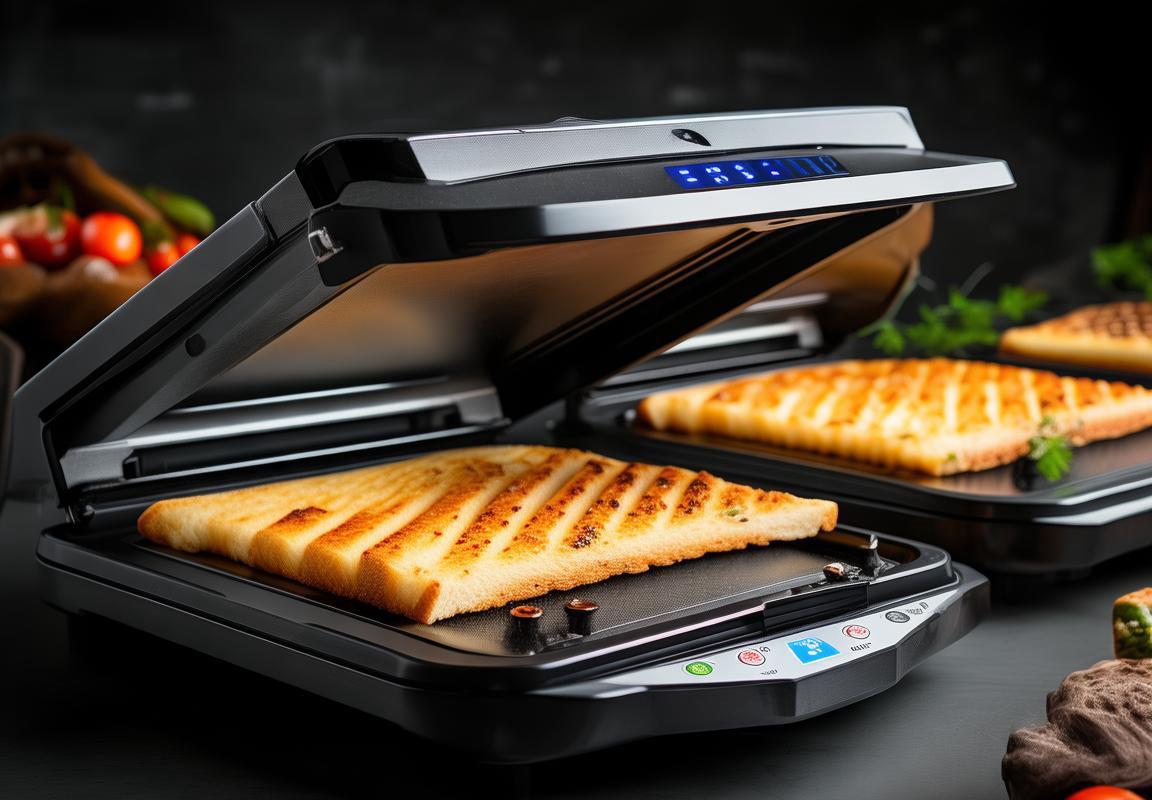
Understanding 120V/240V Systems
In the world of electrical appliances, the concept of dual voltage is becoming increasingly significant, especially in the realm of kitchen gadgets like the panini press. To grasp the essence of dual voltage panini presses, it’s crucial to understand the intricacies of 120V and 240V systems.
The 120V system is commonly found in North America, where the standard electrical grid operates at this voltage level. This lower voltage is designed to ensure safety and reduce the risk of electrical fires. However, the lower voltage also means that appliances designed for 120V may not perform at the same level as those designed for higher voltages.
On the other hand, the 240V system is prevalent in many European countries, Australia, and other parts of the world. This higher voltage allows for more power, which can lead to faster cooking times and more efficient performance. However, it also requires a more robust electrical infrastructure to handle the increased risk of electrical hazards.
When it comes to dual voltage panini presses, the ability to switch between 120V and 240V is a game-changer. It means that these appliances can be used almost anywhere in the world, providing users with the convenience of enjoying their favorite panini wherever they go.
One of the key advantages of the 120V/240V dual voltage system is its versatility. It allows manufacturers to create a single model that can cater to a global market. This not only simplifies production and distribution but also reduces costs associated with producing multiple versions of the same product for different regions.
Understanding the differences between 120V and 240V systems also involves looking at the power consumption and efficiency of appliances. Generally, a 240V appliance will consume less power than a 120V equivalent while delivering the same amount of output. This is because the higher voltage means that the appliance can use thinner wires and smaller transformers, which are more energy-efficient.
However, there are some drawbacks to the 240V system. For instance, not all homes are equipped with the necessary electrical outlets or wiring to support 240V appliances. This is particularly true in older homes or in areas where the electrical infrastructure has not been upgraded to accommodate higher voltages. In such cases, a dual voltage panini press can be a lifesaver, allowing users to plug into a standard 120V outlet without any issues.
Another important factor to consider is the physical size and weight of appliances designed for different voltage systems. A 240V panini press may be larger and heavier due to the need for more robust components to handle the higher voltage. This can be a concern for consumers who are looking for a portable appliance that can be easily transported or stored.
In terms of safety, the 120V system is generally considered to be safer due to its lower voltage. However, this doesn’t mean that 240V appliances are inherently dangerous. Both systems have their own safety standards and regulations that must be adhered to by manufacturers and users alike.
When it comes to maintenance, the 120V/240V dual voltage system can be a bit more complex. Users must be careful to select the correct voltage setting for their specific electrical outlet to avoid damage to the appliance or risk of electrical shock. Additionally, the presence of a switch to toggle between voltages adds an extra layer of complexity that may not be present in single-voltage appliances.
In conclusion, understanding the 120V/240V dual voltage system is essential for anyone interested in purchasing or manufacturing a panini press that can be used globally. It’s a testament to the evolving nature of technology and the demand for appliances that can adapt to various electrical environments. While there are challenges and considerations to keep in mind, the benefits of dual voltage technology are clear: a more convenient, efficient, and versatile product for consumers worldwide.
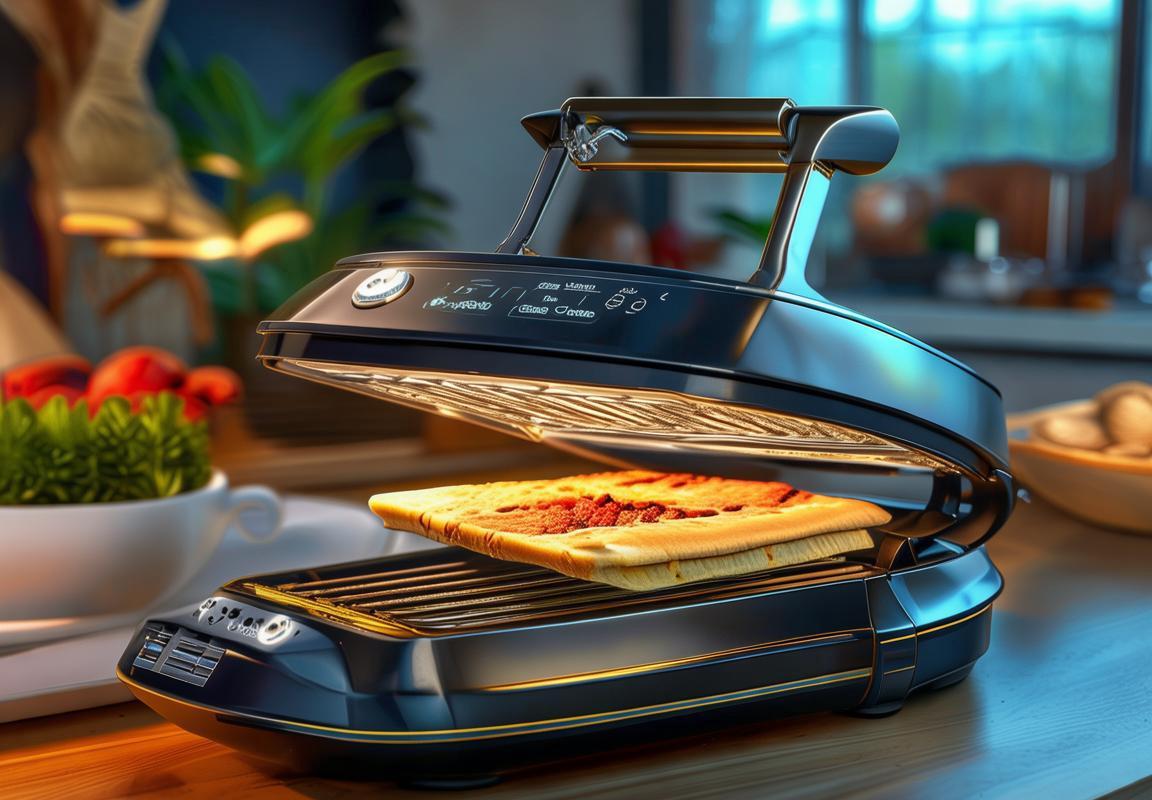
OEM Opportunities in the Dual Voltage Panini Press Market
In the ever-evolving landscape of the kitchen appliance industry, the emergence of 120V/240V dual voltage panini presses has opened up a world of opportunities for Original Equipment Manufacturers (OEMs). These versatile appliances cater to a global audience, offering a unique blend of convenience and functionality. Let’s delve into the various avenues that OEMs can explore within this niche market.
The international appeal of dual voltage technology lies in its adaptability to different electrical standards across the globe. OEMs that specialize in dual voltage panini presses can tap into markets where both 120V and 240V power systems are prevalent. This not only expands their customer base but also ensures that their products are ready for export without the need for significant modifications.
Customization is a key strength for OEMs in the dual voltage panini press market. Customers around the world have varying preferences when it comes to design, features, and branding. OEMs can offer a range of models, each tailored to specific regional tastes and needs. From sleek, modern designs to robust, heavy-duty models, the potential for customization is vast, allowing OEMs to create a diverse product line that resonates with different consumer segments.
One of the most significant opportunities for OEMs is the integration of smart technology. As consumers increasingly demand connectivity and convenience, dual voltage panini presses can be equipped with features like Bluetooth connectivity, digital temperature control, and recipe integration. OEMs that can innovate in this area can offer a product that not only meets but exceeds customer expectations.
Supply chain management is another critical aspect where OEMs can carve out a competitive edge. By establishing strong relationships with suppliers and ensuring a steady flow of high-quality components, OEMs can produce dual voltage panini presses that are reliable and durable. This focus on quality and efficiency can lead to repeat business and a reputation for excellence in the industry.
The regulatory landscape is a double-edged sword for OEMs. While adhering to international electrical standards can be challenging, it also presents a clear path for market entry. OEMs that can navigate these regulations successfully stand to gain a significant advantage over competitors. This involves not only understanding the technical specifications but also the certification processes required for dual voltage appliances.
Marketing and distribution are pivotal for the success of dual voltage panini presses. OEMs need to develop targeted marketing strategies that highlight the benefits of dual voltage technology, such as the ability to use the appliance in both home and travel settings. Distribution channels should be diverse, including e-commerce platforms, local retailers, and international markets, to ensure that the product reaches a wide audience.
The rise of health-conscious consumers has also created an opportunity for OEMs to emphasize the health benefits of using a panini press. By promoting the appliance as a tool for creating nutritious, homemade meals, OEMs can appeal to individuals looking to improve their diet. This aspect of the market can be leveraged to position dual voltage panini presses as a healthy lifestyle choice.
Lastly, the sustainability trend is gaining momentum, and OEMs can capitalize on this by offering eco-friendly options. This could include using recycled materials in the manufacturing process, energy-efficient designs, and packaging that is environmentally responsible. By aligning with sustainability goals, OEMs can appeal to a growing segment of consumers who are environmentally conscious.
In conclusion, the dual voltage panini press market presents a plethora of opportunities for OEMs. From customization and innovation to supply chain and sustainability, there are numerous ways to differentiate and succeed in this dynamic industry. By staying attuned to global trends and consumer needs, OEMs can position themselves as leaders in the dual voltage panini press market, offering a product that is both versatile and desirable on a global scale.
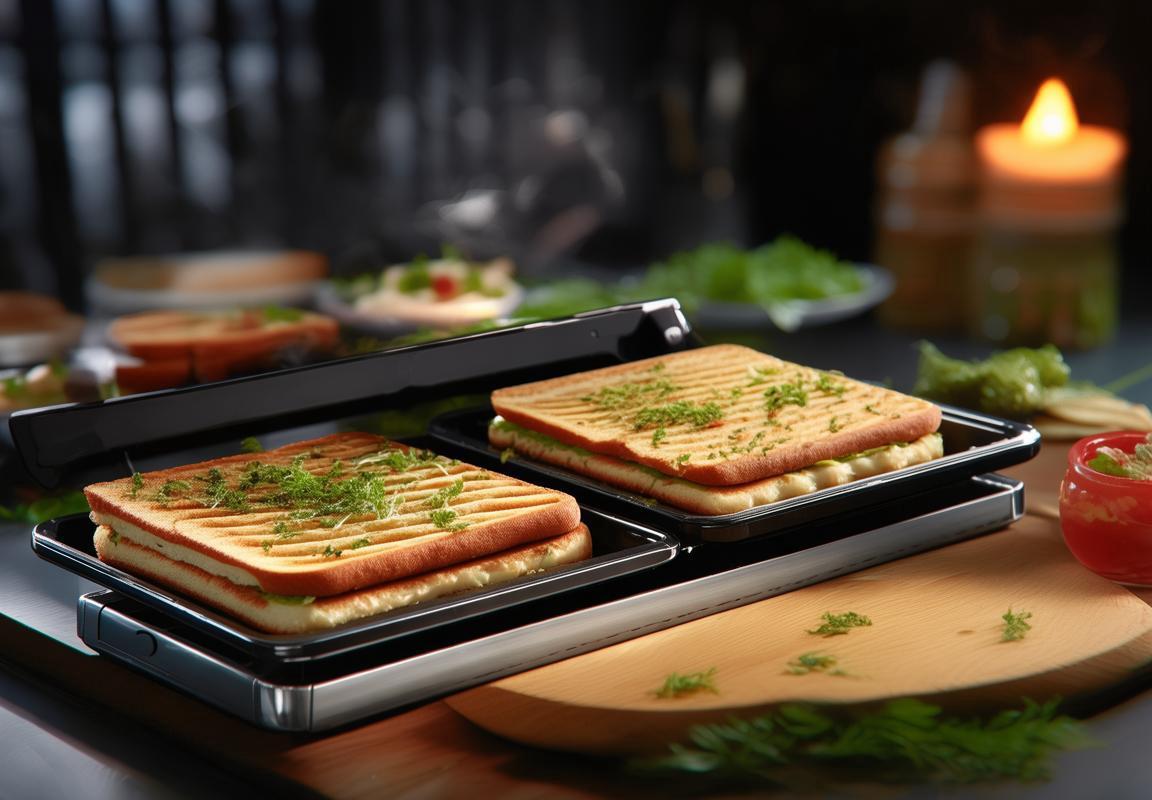
Market Trends and Consumer Preferences
In recent years, the market for dual voltage panini presses has seen a surge in popularity, and this trend is not just a fleeting fad. It reflects a deeper shift in consumer preferences and market dynamics that are reshaping the landscape of kitchen appliances. Let’s delve into the current market trends and the specific preferences that are driving this growth.
The demand for dual voltage appliances has been fueled by a growing international community of food enthusiasts who love to travel or live abroad. These consumers are seeking appliances that can seamlessly transition from one electrical system to another, ensuring they can enjoy their favorite culinary experiences regardless of where they are in the world. This has created a niche market for panini presses that cater to this need.
Smart and Compact DesignOne of the most notable trends in the panini press market is the emphasis on smart and compact designs. Consumers are increasingly looking for appliances that are not only versatile but also space-saving. Dual voltage panini presses have stepped up to the plate by offering a combination of portability and power. These compact units are perfect for small kitchens, RVs, or even dorm rooms, and they come with features that make them a hit among tech-savvy users.
Customization and PersonalizationToday’s consumers are looking for more than just a device that performs its basic function. They want appliances that allow them to customize their experience. In the case of panini presses, this means having adjustable temperature controls, various browning settings, and even non-stick surfaces that can handle a variety of ingredients. The ability to create a perfect sandwich with just the right amount of crispiness or juiciness is a significant draw for consumers.
Health and WellnessThe health and wellness trend has also had a significant impact on the panini press market. Consumers are gravitating towards appliances that can help them make healthier choices without sacrificing taste. Dual voltage panini presses that come with features like adjustable cooking temperatures allow users to achieve a perfect golden-brown crust without the need for excessive oil or butter. This aligns with the growing demand for low-fat, low-calorie, and heart-healthy cooking options.
Globalization and Cultural ExchangeThe globalization of food culture has opened up a world of culinary possibilities for consumers. People are more willing to try international dishes, and dual voltage panini presses enable them to recreate these flavors at home. Whether it’s the classic Italian panini or a fusion creation with a twist, these versatile appliances are seen as a gateway to exploring new cuisines and ingredients.
Eco-Friendly and Sustainable OptionsEnvironmental consciousness is another driving force in the panini press market. Consumers are looking for appliances that are not only energy-efficient but also made from sustainable materials. Dual voltage models that use less energy and have a longer lifespan are becoming more appealing as consumers seek to reduce their carbon footprint and make sustainable choices.
Value for MoneyIn an era where information is at our fingertips, consumers are doing their homework before making purchases. They are looking for appliances that offer great value for money. Dual voltage panini presses, with their ability to serve both 120V and 240V systems, provide a cost-effective solution for those who may have to invest in a separate appliance for different locations. This versatility adds significant value to the product in the eyes of the consumer.
Customer Reviews and Word-of-MouthThe power of social proof cannot be underestimated. Consumers are relying more on online reviews and word-of-mouth recommendations to guide their buying decisions. Positive reviews of dual voltage panini presses are likely to influence future purchases, as consumers trust the experiences and opinions of their peers.
In conclusion, the market trends in the dual voltage panini press market are a testament to the evolving demands of consumers. The emphasis on smart design, customization, health, and sustainability, along with the convenience of a global solution, has created a market that is both diverse and dynamic. As the industry continues to innovate and cater to these preferences, the dual voltage panini press market is poised for continued growth.
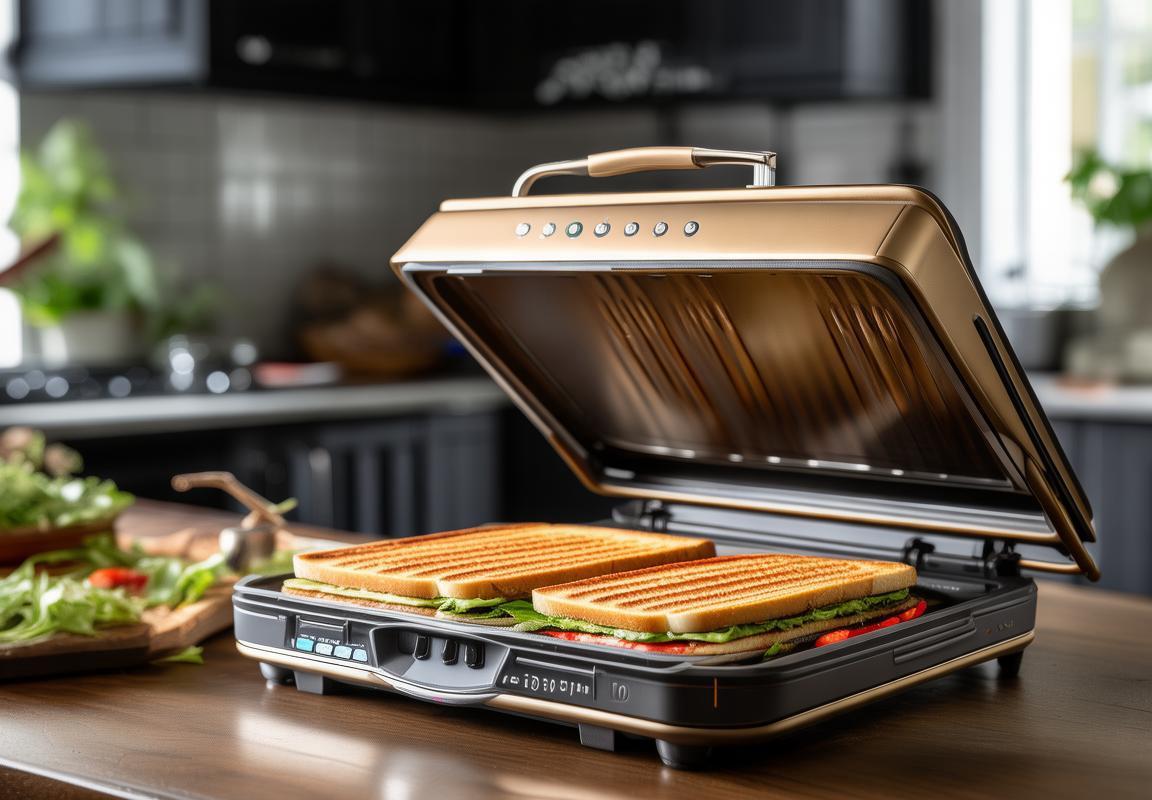
The Global Reach of Dual Voltage Panini Presses
The global landscape for dual voltage panini presses has expanded significantly, reflecting a diverse array of consumer needs and preferences across different regions. From bustling city kitchens to quaint cafes, these versatile appliances have found their way into countless homes and commercial spaces. Let’s delve into the global reach of dual voltage panini presses, exploring the factors that have contributed to their widespread popularity.
-
Diverse Electrical StandardsCountries around the world operate under different electrical standards, with some using 120V systems and others relying on 240V. Dual voltage panini presses offer the convenience of operating seamlessly in both types of environments, making them a practical choice for international travelers and expatriates. This adaptability ensures that no matter where you are, a delicious panini is just a plug away.
-
The Rise of Expat CommunitiesAs global migration continues to shape the cultural fabric of cities worldwide, expat communities have become more prevalent. These communities often seek appliances that mirror their home country’s standards, and dual voltage panini presses fill this niche perfectly. From Japan to the United States, expats appreciate the ability to replicate the culinary experiences they cherish from back home.
-
Travel and Tourism IndustryTourism is a major contributor to the global economy, and dual voltage panini presses are a testament to the travel industry’s impact on consumer goods. Travelers looking for a taste of home often seek out these appliances to prepare familiar meals in their temporary accommodations. Hotels, vacation rentals, and bed and breakfasts have also recognized the value of offering dual voltage appliances to cater to their diverse clientele.
-
Popularity in International Cuisine HotspotsCertain regions have gained a reputation for their love of international cuisine. In places like Paris, New York, and Tokyo, where international restaurants are abundant, the demand for appliances that can handle various electrical voltages is high. Dual voltage panini presses are well-suited to these markets, as they allow diners to enjoy the flavors of multiple cultures without worrying about compatibility issues.
-
Growing Demand for Home Appliances with Global AppealConsumers today are more travel-savvy and culturally aware than ever before. This trend has led to a rise in demand for home appliances that not only serve a practical purpose but also have a global appeal. Dual voltage panini presses are a prime example of this, as they cater to a desire for convenience and authenticity in meal preparation.
-
The Role of Online MarketplacesThe growth of online shopping has made it easier than ever for consumers to purchase appliances from anywhere in the world. Dual voltage panini presses are readily available on global e-commerce platforms, allowing manufacturers to tap into a vast international market. This accessibility has also given rise to a competitive landscape where innovation and quality are key differentiators.
-
Collaboration with Local RetailersTo effectively penetrate new markets, manufacturers of dual voltage panini presses often collaborate with local retailers. These partnerships help in understanding local consumer preferences and adapting marketing strategies accordingly. Local knowledge combined with global products can lead to successful market penetration and sustained growth.
-
The Impact of Social Media and InfluencersSocial media has become a powerful tool for marketing and brand awareness. Influencers and food enthusiasts often showcase their use of dual voltage panini presses, highlighting the ease of preparing international dishes at home. This type of content can significantly influence consumer purchasing decisions, especially among tech-savvy younger demographics.
-
The Environmentally Conscious ConsumerAs sustainability becomes a priority for many, dual voltage appliances are seen as eco-friendly choices. By reducing the need for multiple appliances and minimizing the environmental impact of shipping, dual voltage panini presses align with the values of environmentally conscious consumers.
-
The Future of Dual Voltage AppliancesThe global reach of dual voltage panini presses is a sign of things to come in the appliance industry. As consumers continue to demand products that are versatile and cater to their diverse needs, the trend towards dual voltage appliances is likely to persist. Manufacturers that invest in research and development to create innovative dual voltage solutions will be well-positioned to meet these evolving demands.
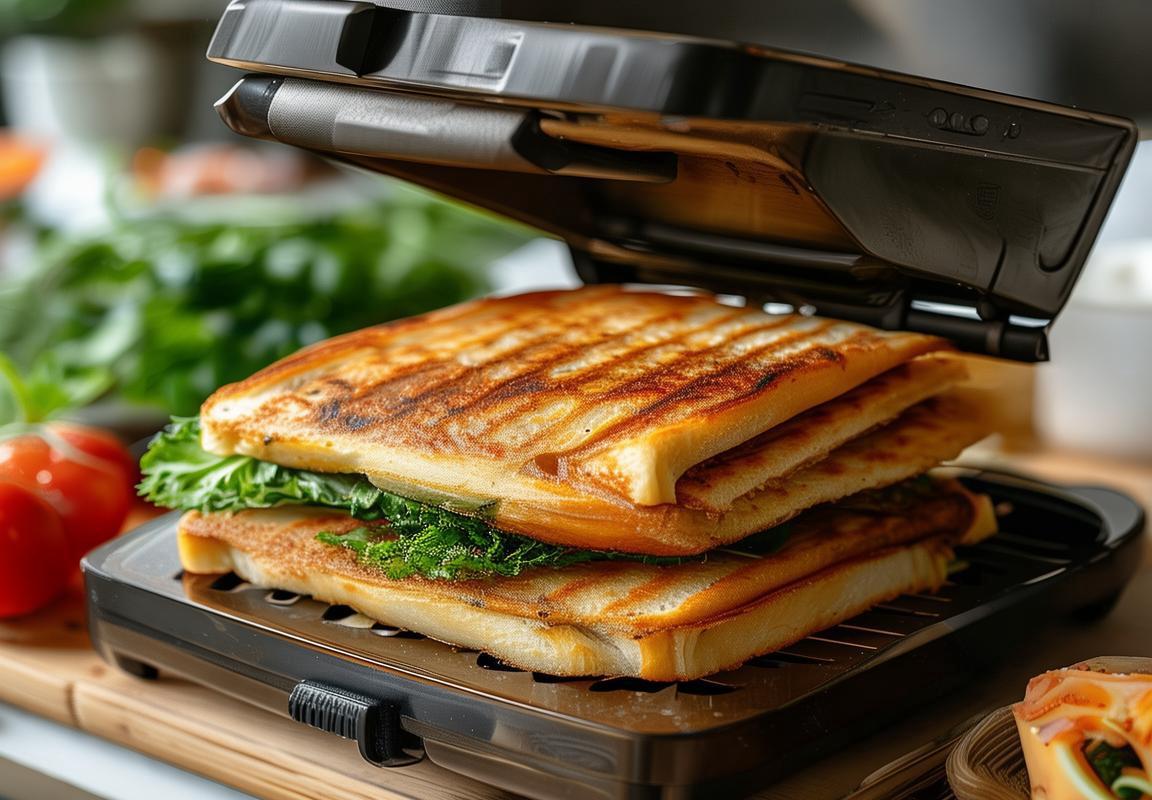
Regulatory Considerations and Compliance
In the competitive landscape of the appliance industry, understanding and adhering to regulatory standards is crucial for OEMs looking to produce dual voltage panini presses. Here’s a delve into the regulatory considerations and compliance aspects that these manufacturers must navigate:
The electrical standards vary significantly across the globe, which is a challenge for OEMs aiming to produce appliances that can be used universally. For instance, the United States operates on a 120V system, while many European countries use a 230V system. This discrepancy necessitates careful engineering to ensure that panini presses are safe and effective across these different voltages.
Certification bodies like Underwriters Laboratories (UL) in the U.S. and the Conformité Européenne (CE) mark in Europe play a pivotal role in ensuring compliance. These certifications are not just about meeting safety standards but also about building trust with consumers who are familiar with these marks.
Designing a dual voltage panini press requires a thorough understanding of both the 120V and 240V systems. This includes selecting components that can handle the higher voltage without overheating or failing. OEMs must also ensure that the appliances have built-in safety features, such as thermal cut-offs and surge protectors, to prevent electrical hazards.
The process of obtaining certifications can be time-consuming and costly. It involves rigorous testing, documentation, and sometimes modifications to the product design. However, for OEMs, the investment is often worth it, as it opens up a broader market and enhances the product’s credibility.
In some regions, there are additional regulations that pertain to energy efficiency. For example, the Energy Star program in the U.S. and the EuP (Energy-related Products) directive in Europe require appliances to meet certain energy consumption criteria. This means that in addition to safety and voltage compatibility, OEMs must also focus on the environmental impact of their products.
The labeling of dual voltage appliances is another regulatory aspect that cannot be overlooked. Clear and accurate labeling is essential for consumers to understand how to safely use the appliance in their specific country. This includes voltage ratings, power consumption, and any specific warnings or instructions.
International trade agreements also play a role in regulatory compliance. For instance, the World Trade Organization (WTO) agreements facilitate the movement of goods across borders but also impose rules that must be followed. OEMs must be aware of these rules to avoid any legal issues that could affect their operations.
In terms of compliance, OEMs must also consider the lifecycle of the product. This means ensuring that the panini press is not only safe to use but also to dispose of. Proper recycling and waste management are becoming increasingly important, and OEMs must design their products with this in mind.
Lastly, staying informed about changes in regulations is crucial. Laws and standards can evolve, and OEMs must stay abreast of these changes to remain compliant. This often requires a dedicated team or partnerships with regulatory experts who can provide up-to-date information.
In summary, the regulatory landscape for dual voltage panini presses is complex, involving a multitude of factors from safety standards to environmental concerns. For OEMs, navigating this landscape successfully requires a commitment to quality, a willingness to invest in compliance, and a deep understanding of the global market’s diverse requirements.
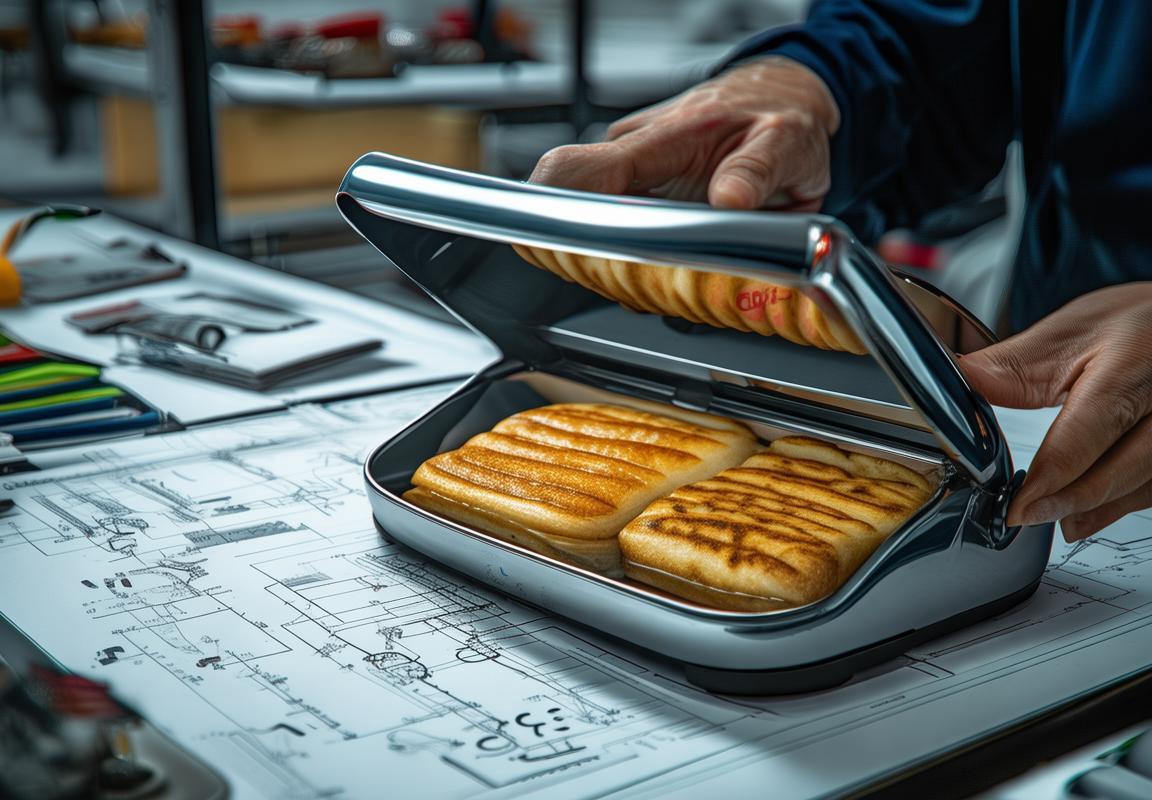
The Role of Innovation in Dual Voltage Panini Presses
In the ever-evolving landscape of kitchen appliances, the dual voltage panini press has emerged as a versatile and sought-after product. Innovation plays a pivotal role in driving its market success, offering users not just a cooking gadget but a smart, efficient, and user-friendly experience. Here’s a closer look at how innovation is shaping the dual voltage panini press market.
The advent of smart technology has revolutionized the way we interact with kitchen appliances. Dual voltage panini presses are now equipped with features that not only enhance the cooking process but also provide a seamless user experience. From digital temperature controls to programmable settings, these innovations cater to the demands of modern consumers who value convenience and precision.
One of the key innovations in dual voltage panini presses is the incorporation of non-stick surfaces that ensure easy release of food and effortless cleanup. This not only saves time for the user but also reduces the need for excessive oil, promoting healthier cooking habits. The development of advanced materials and coatings has been a game-changer in the industry, making these presses a favorite among health-conscious consumers.
Energy efficiency is another area where innovation has made a significant impact. Modern dual voltage panini presses are designed to consume less energy while maintaining high performance. Features like automatic shut-off and energy-saving modes are not just environmentally friendly but also cost-effective for users. These innovations make the appliance more appealing to eco-conscious consumers who are looking for sustainable kitchen solutions.
The integration of smart features like Bluetooth connectivity and smartphone apps has transformed the way users interact with their panini presses. Users can now monitor and control the cooking process remotely, adjusting temperatures and settings with a simple tap on their phones. This level of connectivity not only adds a layer of convenience but also opens up possibilities for future updates and enhancements through software updates.
Safety is a paramount concern in kitchen appliances, and innovation has addressed this aspect with great care. Dual voltage panini presses now come with features like safety locks, emergency shut-offs, and overheating protection. These innovations ensure that users can enjoy their favorite sandwiches without worrying about accidents or damage to the appliance.
Innovation has also extended to the design and aesthetics of dual voltage panini presses. Manufacturers are now focusing on sleeker, more modern designs that complement contemporary kitchen aesthetics. The use of high-quality materials and innovative shapes has made these presses not just functional but also a stylish addition to any kitchen counter.
Customization is another area where innovation is making waves. Many dual voltage panini presses now offer various press plates and inserts, allowing users to create a wide range of dishes, from classic paninis to gourmet sandwiches. This flexibility is a direct response to consumer preferences for variety and the desire to experiment with different flavors and textures.
In the realm of user interface, innovation has led to the development of intuitive controls that are easy to use, even for those who are not tech-savvy. Clear displays, easy-to-understand icons, and simple navigation have made these appliances accessible to a broader audience.
The role of innovation in the dual voltage panini press market is undeniable. It has transformed a simple kitchen gadget into a sophisticated tool that combines convenience, efficiency, and safety. As technology continues to advance, we can expect even more innovative features to be integrated into these presses, making them an indispensable part of modern kitchens worldwide.
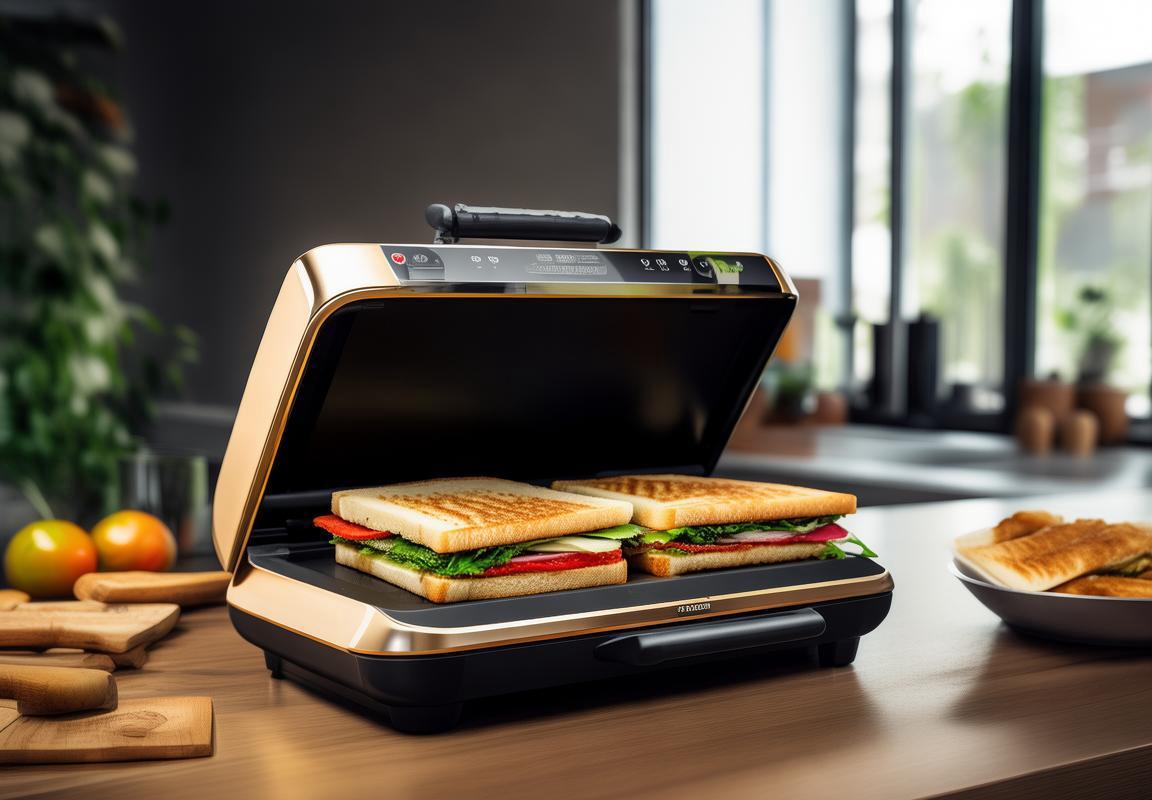
Case Studies: Successful Dual Voltage Panini Press OEMs
In the competitive landscape of the kitchen appliance industry, a select few Original Equipment Manufacturers (OEMs) have carved out a niche for themselves by excelling in the production of dual voltage panini presses. These companies have not only mastered the technical aspects of creating appliances that can operate on both 120V and 240V power systems but have also navigated the complexities of global markets with success. Here’s a look at some of the key players and their strategies:
-
One such OEM, known for its cutting-edge designs, has focused on innovation and customization. They’ve developed a range of dual voltage panini presses that cater to the specific needs of different regions, offering features that are both practical and appealing to local consumers. Their success lies in understanding the cultural nuances and preferences of various markets.
-
Another prominent OEM has taken a different approach, emphasizing quality and durability. Their panini presses are not only dual voltage but also boast of high-quality components that ensure long-lasting performance. This strategy has resonated with consumers who prioritize reliability over other features, leading to a strong brand reputation.
-
A third OEM has made a name for itself by embracing sustainability. They’ve designed their dual voltage panini presses with eco-friendly materials and energy-efficient technologies, appealing to environmentally conscious consumers. This has opened up new markets and has helped them differentiate their products from competitors.
-
Case in point, a well-established OEM has leveraged its global supply chain to source high-quality parts at competitive prices. This has allowed them to offer dual voltage panini presses at affordable rates without compromising on quality. Their strategic partnerships have been crucial in ensuring that their products meet international safety standards.
-
One innovative OEM has focused on integrating smart technology into their dual voltage panini presses. By adding features like temperature control and smart connectivity, they’ve created a product that not only performs well but also offers convenience and control to the user. This has attracted tech-savvy consumers who are looking for smart kitchen appliances.
-
Another successful OEM has targeted niche markets with specialized dual voltage panini presses. For example, they’ve developed models tailored for outdoor use, with rugged construction and portable designs. This has allowed them to tap into a segment of the market that was previously underserved.
-
In terms of marketing, some OEMs have employed a localized approach, adapting their promotional materials and strategies to align with local customs and languages. This has helped them build strong relationships with retailers and consumers alike, ensuring that their products are well-received in different parts of the world.
-
One OEM has also capitalized on the rise of e-commerce by offering direct-to-consumer sales. By selling their dual voltage panini presses online, they’ve been able to reach a broader audience and provide customers with a seamless purchasing experience.
-
Another key strategy for successful OEMs has been to invest in research and development. By continuously improving their products and staying ahead of market trends, they’ve been able to maintain a competitive edge. This includes exploring new materials, enhancing user interfaces, and integrating the latest safety features.
-
Finally, these successful OEMs have recognized the importance of customer service. They’ve established support networks that cater to users across different regions, ensuring that any issues with their dual voltage panini presses are addressed promptly and effectively.
These case studies highlight the diverse strategies that OEMs have employed to thrive in the dual voltage panini press market. From innovation and customization to quality and sustainability, each company has found its own path to success, demonstrating the potential for growth and profitability in this niche sector.

Future Outlook and Predictions
In recent years, the dual voltage panini press market has witnessed a significant surge in demand. This demand is not confined to any single region but has spread globally, making it an attractive market for Original Equipment Manufacturers (OEMs) worldwide. Let’s delve into some of the key aspects that have contributed to the global reach of these versatile appliances.
The adaptability of dual voltage panini presses is a major factor in their widespread appeal. Designed to work with both 120V and 240V power systems, these presses are perfect for international travelers and expatriates who may find themselves in regions with different electrical standards. This dual compatibility makes them a versatile and convenient choice for users who want a reliable appliance that can be taken on the go.
International trade shows and exhibitions have played a crucial role in promoting the global reach of dual voltage panini presses. These events serve as platforms for OEMs to showcase their products to a diverse audience, including importers, distributors, and retailers from around the world. By attending such events, OEMs can establish relationships with key players in various markets and expand their distribution networks.
Culinary trends have also contributed to the global popularity of dual voltage panini presses. The rise of the foodie culture has sparked an interest in gourmet cooking, and panini presses have become a staple in many kitchens. From gourmet sandwiches to homemade pizzas, these versatile appliances offer users the opportunity to experiment with different recipes, making them a sought-after kitchen gadget across continents.
Environmental concerns have prompted manufacturers to produce energy-efficient appliances, and dual voltage panini presses fit this bill. With the growing emphasis on sustainability, consumers are increasingly looking for appliances that consume less energy without compromising on performance. The dual voltage feature allows for energy savings in regions where the voltage is higher than standard household outlets.
Another factor that has propelled the global reach of dual voltage panini presses is the rise of online shopping. E-commerce platforms have made it easier for consumers to purchase products from around the world, regardless of their location. This has opened up new markets for OEMs, as customers in remote areas can now access a wider variety of products, including dual voltage panini presses.
The demand for convenience is another driving force behind the global success of dual voltage panini presses. As modern life becomes increasingly fast-paced, consumers are looking for quick and easy ways to prepare meals. These appliances offer a solution that doesn’t require the user to invest in additional tools or equipment, making them a convenient choice for busy individuals.
Collaborations between OEMs and local distributors have been instrumental in the expansion of dual voltage panini presses into new markets. By partnering with local businesses, OEMs can gain valuable insights into the preferences and needs of consumers in different regions. This collaboration also helps in navigating the complex regulatory landscapes of various countries, ensuring compliance with local standards.
Innovation in design and technology has also played a significant role in the global reach of dual voltage panini presses. Manufacturers are constantly improving their products to offer better features, such as non-stick surfaces, adjustable temperature settings, and compact designs. These innovations not only enhance the user experience but also contribute to the appliance’s global appeal.
The global reach of dual voltage panini presses is also a testament to the power of brand recognition. As more consumers become familiar with the benefits of dual voltage appliances, they are more likely to seek out brands they trust. This brand loyalty helps OEMs maintain a strong presence in the market, even as they expand into new territories.
Lastly, the rise of social media has played a pivotal role in the global marketing of dual voltage panini presses. By leveraging platforms like Instagram and YouTube, OEMs can showcase their products to a global audience and create buzz around their brand. This digital marketing strategy has proven to be effective in reaching consumers who are interested in gourmet cooking and convenience appliances.
As the demand for dual voltage panini presses continues to grow, it’s clear that the global reach of these appliances is not just a trend—it’s a testament to the evolving needs and tastes of consumers worldwide. OEMs that continue to innovate, adapt to local regulations, and establish strong partnerships will undoubtedly find success in this dynamic market.